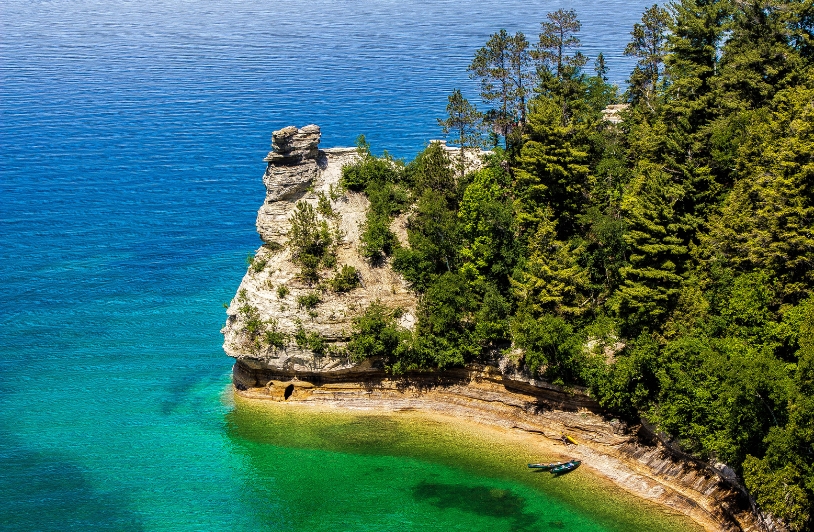Effort Will Cut Carbon Pollution and Pursue Net-Zero Energy Consumption
The National Parks of Lake Superior Foundation (NPLSF), a nonprofit organization based in St. Paul, Minnesota, is leading a national coalition of public and private agencies, nonprofits and individuals to fully eliminate fossil fuel consumption in powering the infrastructure of all five National Park sites around Lake Superior.
The four-year initiative, officially announced on January 28 as Decarbonize the Parks, would make the five national parks the first in the nation to “decarbonize,” eliminating carbon dioxide and other greenhouse gas emissions into the atmosphere from their daily operations. The parks undertaking this ambitious effort are:
- Apostle Islands National Lakeshore (Wisconsin)
- Grand Portage National Monument (Minnesota)
- Isle Royale National Park (Michigan)
- Keweenaw National Historic Park (Michigan)
- Pictured Rocks National Lakeshore (Michigan)
Reducing or eliminating their carbon footprint is critical to preserve the parks and their resources for visitors and future generations to enjoy and learn from. It also serves to set the standard for the entire National Park Service.
“Decarbonizing is not only the right thing to do for our five parks on Lake Superior, but it will also act as a realistic model for other National Parks and public lands,” said Tom Irvine, the Executive Director of the NPLSF. “With 10% of the world’s freshwater, the majestic Lake Superior and its National Parks are facing the ravages of a changing climate. We owe it to the lake, the parks, and ourselves to create a clean future free of carbon pollution.”

The Decarbonization Plan includes proven technologies that the NPLSF official report says “will not compromise park operations, comfort, or usability, and includes measures such as electric vehicles (EVs), cold-climate air-source heat pumps (cc-ASHPs), solar photovoltaics (PV), and battery energy storage.”
The NPSLF official report also provides two different models and associated costs:
- The parks can achieve 93% decarbonization for a capital investment of $10.4 million and over 25 years will: ▪ Eliminate nearly 30,000 tCO2-equivalent emissions ▪ Reduce operating costs by $5.6 million ▪ Save $2.7 million in total lifecycle costs compared to current operations
- The parks can achieve 100% decarbonization for a capital investment of $15.3 million and over 25 years will: ▪ Eliminate nearly 32,000 tCO2-equivalent emissions ▪ Reduce operating costs by $4.9 million ▪ Cost $3.5 million more in total lifecycle costs compared to current operations
100% decarbonization comes with a much higher expense due the large solar arrays and battery energy storage systems needed in order to meet energy demands in all conditions, especially in the more remote locations, such as Isle Royale National Park, in Michigan.

Taking each park’s unique attributes into consideration, methods for achieving decarbonization will be tailored to each one, with options including:
- Zero-carbon energy, using solar, geothermal and other renewable grid sources.
- Energy efficiency in windows, insulation, lighting, HVAC and appliances.
- Transportation electrification of light-duty vehicles and building charging stations are a top priority. We are monitoring emerging technology for EV boats.
- Innovation, including load management and new high-impact, cost-efficient and proven technologies.
Funding for Decarbonize the Parks will come from existing National Park Service budgeting, including new dollars from the Inflation Reduction Act, Great American Outdoors Act, and Bipartisan Infrastructure Legislation. Private donations through the NPLSF will help cover any funding shortfalls.
CLICK HERE TO DOWNLOAD THE DECARBONIZATION PLAN SUMMARY





